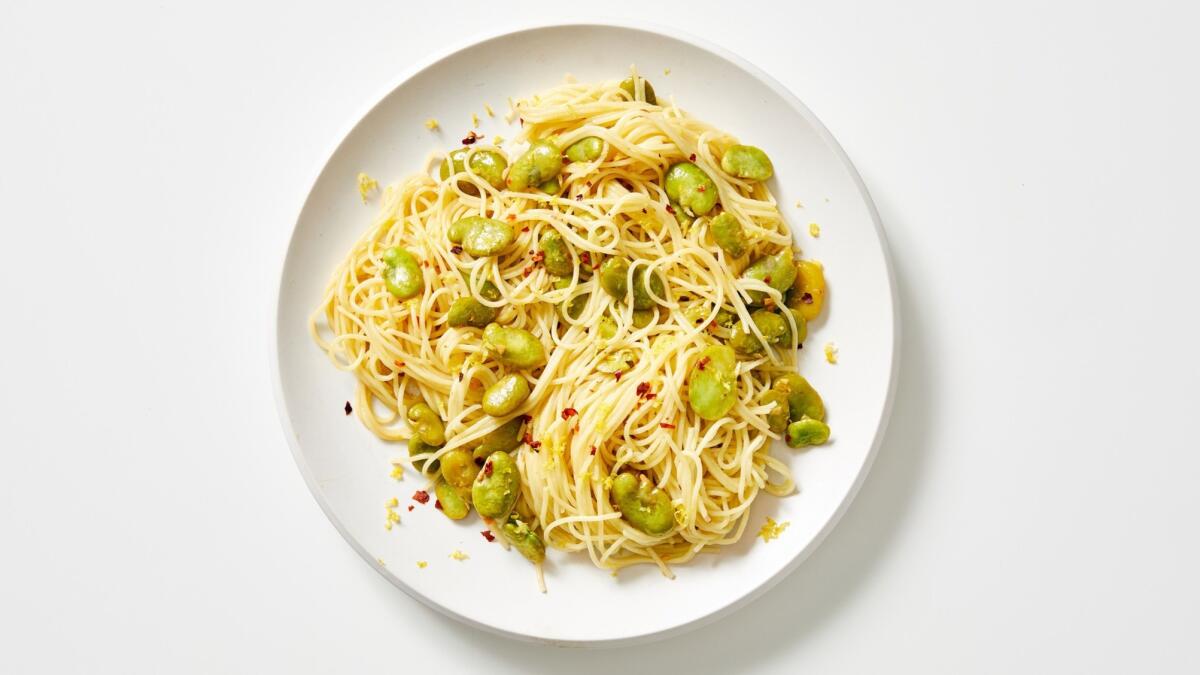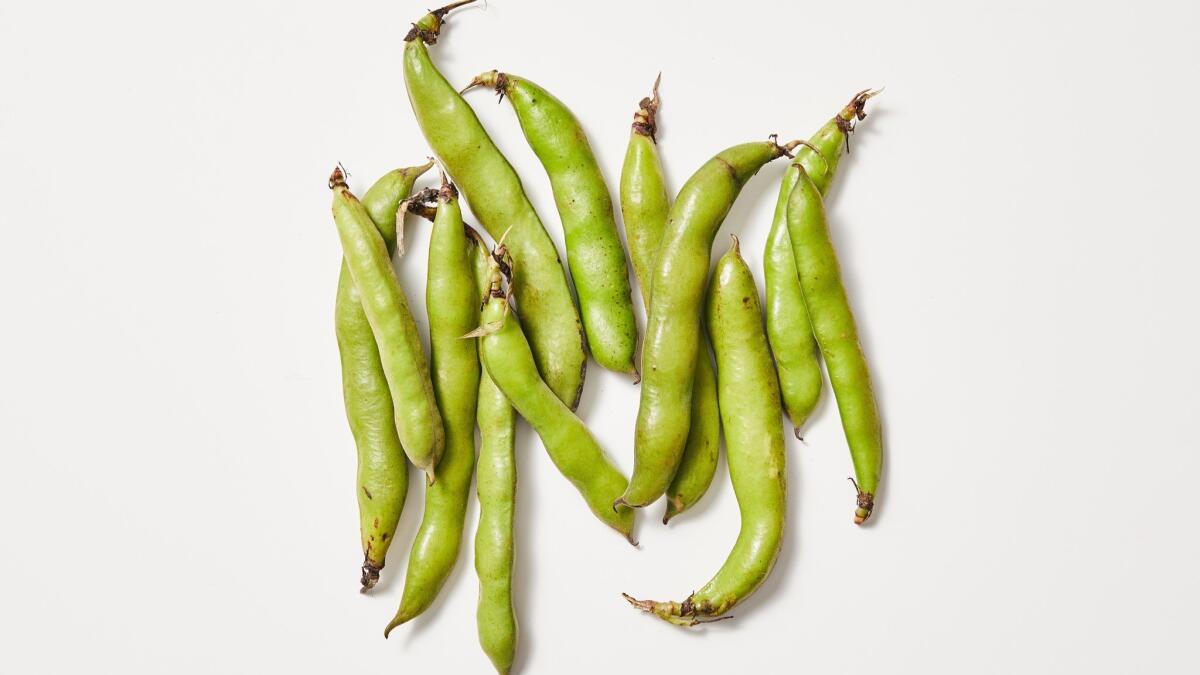The Saturday Cook: Fava beans shine in a vegetarian spin on scampi

Every cook has certain tedious kitchen tasks that he or she doesn’t mind, along with those that make him want to scream. I can stand in front of a pot of bubbling beans for hours, stirring away endlessly, in bliss. Ask me to chop nuts, however, and I’d rather take a murderous stabbing approach than the careful, slow chop necessary to catch each orb before it rolls off my cutting board and down between the counter and stove, never to be seen again until I move apartments.
One task that elicits such a reaction from most people is shelling beans. And while I know I should abhor the task, my upbringing instilled in me the love of purposefully stretching out prep so that it doesn’t feel like a chore but, rather, a ritual.
My grandparents had a small farm in rural Mississippi, and every time late July rolled around, it meant one thing: time to pick peas. Picking the pods was truly horrendous. My father would hand me a 10-gallon bucket and say, “You can quit when the bucket’s full” and then walk off with a maniacal laugh, knowing full well how long that would take. The plants were low to the ground, so you had to stand in a perma-bent-over position while swatting away mosquitoes, yellow jackets and all kinds of multi-legged critters that give me nightmares to this day. Not to mention the blazing, late-summer Southern sun and the extreme humidity that came with it. Picking peas till my fingers were cut deep, I prayed for relief.
It came the next day. My family and I would sit around the living room, each with a bucket at our feet and a giant, plastic bowl the size of a steel drum on our lap, and sort the peas. All shriveled or bug-eaten pods got discarded first. Then we’d place a thumbnail at one end of a pod and zip through it to send peas cascading into the bowl — the variety we harvested was called “zipper cream” for this reason. Then we’d blanch the peas in giant stockpots full of boiling water and scoop them into gallon-size zip-top plastic bags to store in the freezer, ready to cook all year long whenever we needed them.

All this to say, fava beans here in California are like those peas in my home state. They have large pods from which you need to pry the beans, then you need to blanch the beans to loosen another layer of skin that needs to come off to free the legumes fully for consumption. It’s tedious for sure but can be fun to do with your child (or as punishment for one who didn’t do his homework?).
Once the beans are prepped and ready to go, store them in the freezer to make all that work worth it.
But set aside a couple of cups first to make this recipe, a vegetarian spin on shrimp scampi in which meaty, sweet favas replace the similarly charactered crustaceans. A little garlic, some chile flakes, a good dose of white wine and a refreshing hit of lemon perfectly highlight the flavor of these hard-won beans.
Fava Bean Scampi
15 minutes. Serves 4.
Ingredients
- Kosher salt
- ¼ cup extra-virgin olive oil, plus more for serving
- 6 almond-size garlic cloves, minced
- ½ teaspoon crushed red chile flakes
- 2 cups peeled fava beans (see method below)
- ½ cup white wine
- 1 pound angel hair or linguine pasta
- Finely grated zest and juice of 1 small lemon
- Freshly ground black pepper
Instructions
- Bring a large pot of salted water to a boil.
- Heat the olive oil in a large skillet over medium-high heat. Add the garlic and chile flakes, and cook until beginning to brown, 30 seconds to 1 minute. Add the fava beans and wine, cover, and simmer until the beans are tender but still have a little bite to them, about 4 minutes.
- While the favas cook, add the pasta to the boiling water and cook, stirring occasionally, until al dente. Reserve 1 cup of the pasta cooking water before you drain it.
- Drain the pasta, and add it to the skillet along with the lemon zest and juice, and toss to combine, adding at least 1/2 cup of the reserved cooking water to make a loose sauce. Season the pasta with salt and pepper, and serve while hot.
How to prep fava beans
Start with about 5 pounds of fava beans in pods (any less is not worth all the trouble). Shuck the beans, discarding the pods. Meanwhile, bring a large pot of salted water to a boil. Drop the shucked fava beans in the boiling water and cook, stirring, to set their color and loosen their skins, about 1 minute. Drain the fava beans in a colander, then plunge them into a bowl of ice water to stop their cooking. Once cool, drain again. Using your fingernail or point of a paring knife, pierce the outer skin of each bean and gently squeeze it to slip off the skin; discard the skins. You should have about 8 cups of peeled fava beans now. Use them immediately or put them in a zip-top storage bag and freeze for up to 1 month.
More to Read
Eat your way across L.A.
Get our weekly Tasting Notes newsletter for reviews, news and more.
You may occasionally receive promotional content from the Los Angeles Times.











